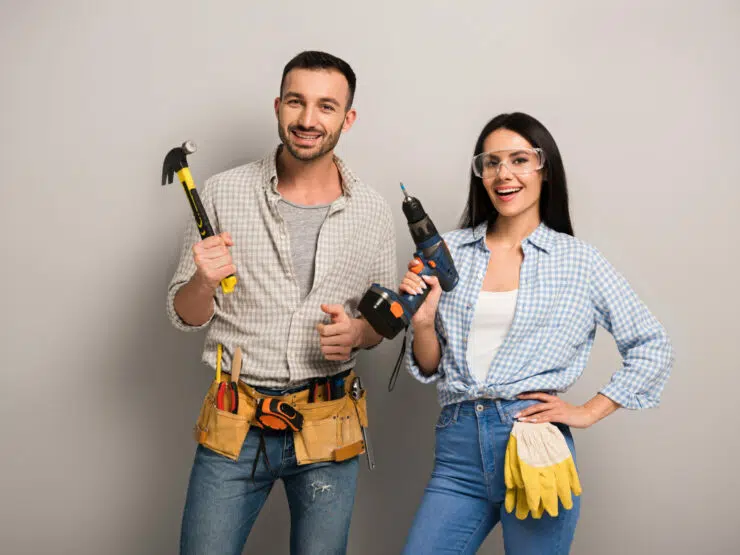

You might be surprised to learn that about half of all eye injuries happen at home. Things that you do every day could put your eyes at risk of injury. Chemicals like bleach and other household cleaning products cause about 125,000 eye injuries each year.*
Home improvement chores come with the risk of screws, nails, and hand tools flying into the air and into your eyes. Power tools can send wood chips and other particles into the air that then end up in your eyes.
Tidying up in the yard? Dangers while doing yard work include not only lawn mowers, trimmers, and shovels but also branches, twigs and thorns.
The good news? Simply wearing protective eyewear could reduce your risk of injury by 90 percent!
The American Academy of Ophthalmology urges every household to have at least one pair of ANSI-approved protective eyewear. (“ANSI-approved” means the protective eyewear is made to meet safety standards of the American National Standards Institute.)
Most activities that can cause injury are so common that you may not recognize the risk. Below are some tips to keep you and your eyes safe.
In the House
Read the labels of cleaners and chemicals carefully, and don’t mix products.
While cooking food that could splatter oil or hot grease, try using a grease shield on the frying pan to protect yourself.
Wrap a towel around the top of the champagne bottle to “catch” the cork. Never point a champagne bottle towards yourself or others when opening.
For homes with children or the elderly, secure rugs with a non-slip pad underneath, put padding on sharp corners and edges, and make sure your railings are secure and not loose.
In the Yard
Check the lawn and outdoor area for sticks, rocks, and other items before mowing.
Be mindful of wayward branches and thorns when you are moving about your yard.
Don’t skip protective eye wear when you are using a power trimmer, edger, or clipping hedges and bushes.
In the Garage or Workshop
Keep your power tools in good condition. Damaged tools should be replaced or repaired.
Make sure that the spray nozzle is pointed away from you when using solvents or other chemicals.
Use caution when tying equipment or loads with bungee cord.
When performing any of these tasks around the home, remember that people nearby also face serious risk. This is especially important for children who might be watching you do chores or playing nearby. When in doubt, make sure that bystanders also are equipped with proper safety wear.
*Source: American Academy of Ophthalmology

